5 historic Macon buildings threatened by neglect, demolition. Group raises attention
Five historic Macon buildings are in need of preservation, says a group focused on maintaining local architecture and sharing history.
Historic Macon last year placed the D.T. Walton Building, the Dr. E.E. Green House, First National Bank And Trust Co., the Willingham-McBrearity House and the Roxy Theater on the group’s “Fading Five” list, an initiative created to raise awareness about the preservation of historic buildings.
The Fading Five list was started in 2015 in response to the demolition of two historic buildings downtown: the Charles Douglas House and Tremont Temple Baptist Church.
These were significant pieces of architecture that were part of Macon’s cultural heritage, and were essentially destroyed for a strip mall and parking lot, according to Matt Chalfa, a consultant who assists people with historic rehabilitation tax incentive projects and National Register of Historic Places nominations, as well as heads up different educational, advocacy, and research projects geared towards preserving historic architecture and sharing the stories of how the community developed..
Chalfa said each year Historic Macon puts out requests for public nominations so that the community can tell them what they think is important and in danger.
“We combine those public nominations with our own in-house nominations, which we then present to our Preservation Committee,” he said. “That body weighs the merits of listing each nomination until there is a consensus of which building is the most threatened.”
“The committee then sends that recommendation, and the other nominations, to the Historic Macon Board of Trustees, who ultimately vote on which property to list,” Chalfa said. “Part of this process also involves de-listing properties on the Fading Five that have been deemed to no longer be threatened to make room for new properties.”
Chris Floore, chief communications officer for Macon-Bibb County, said a former building included on the Fading Five list now serves the community.
“When a city building was added to the Fading Five - the Train Center at corner of First and Oglethorpe - we found a great reuse for it,” he said. “We revitalized the whole facility and moved our UGA County Extension Office there, and now it’s a center of community classes, activities, and resources.”
The history of Macon’s ‘Fading Five’
D.T. WALTON BUILDING
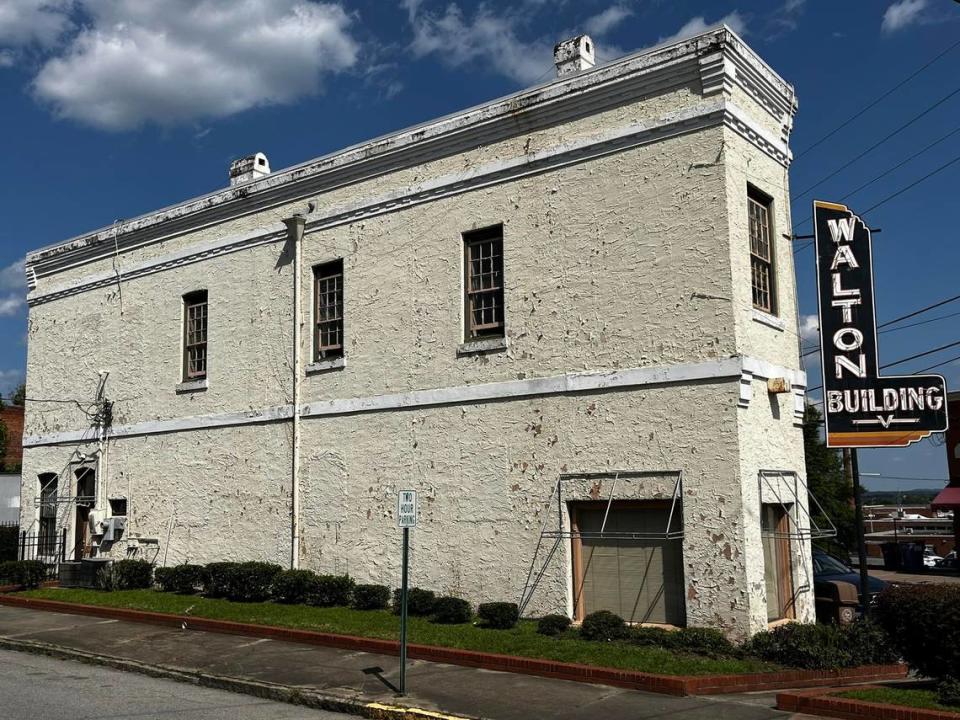
What is now the D.T. Walton Building, located at 591 D.T. Walton Way, was built in 1887. It has been on the National Register of Historic Places since 1982.
Dr. D.T. Walton Sr. bought the building — at the intersection of Cotton Avenue and New Street — in 1936, and he operated his dental office there. It’s part of the Cotton Avenue District, a major center of Black-owned businesses that flourished during the Jim Crow era that enforced racial segregation.
Other businesses operated out of the building over the years, including the offices of Drs. Wanza A. Davis and Joshua S. Williams; Dixie Tobacco and Candy; the Dixon John Radio Service; Lary’s Bakery; Six Point Weiner Stand; J.L. Montgomery Art Supply Co.; a harness maker; a life insurance company; and a women’s clothing store.
Walton was a World War I veteran and Howard University-educated dentist. He was one of the founding members of the Georgia Dental Society, the first Black dental association in Georgia. He was a trailblazer in the dental profession and influential in Macon’s civil rights movement.
The building, which the nearby First Baptist Church now owns, has been vacant since about 2005.
In 2008, First Baptist had the opportunity to acquire the property from the Walton estate. The family wanted to ensure the preservation of the building and to maintain the family legacy associated with it.
First Baptist made plans to rehabilitate the building for its ministry’s outreach and community services. Due to a variety of circumstances, including the COVID-19 pandemic, construction plans were delayed, according to the Historic Macon Website.
DR. E.E. GREEN HOUSE
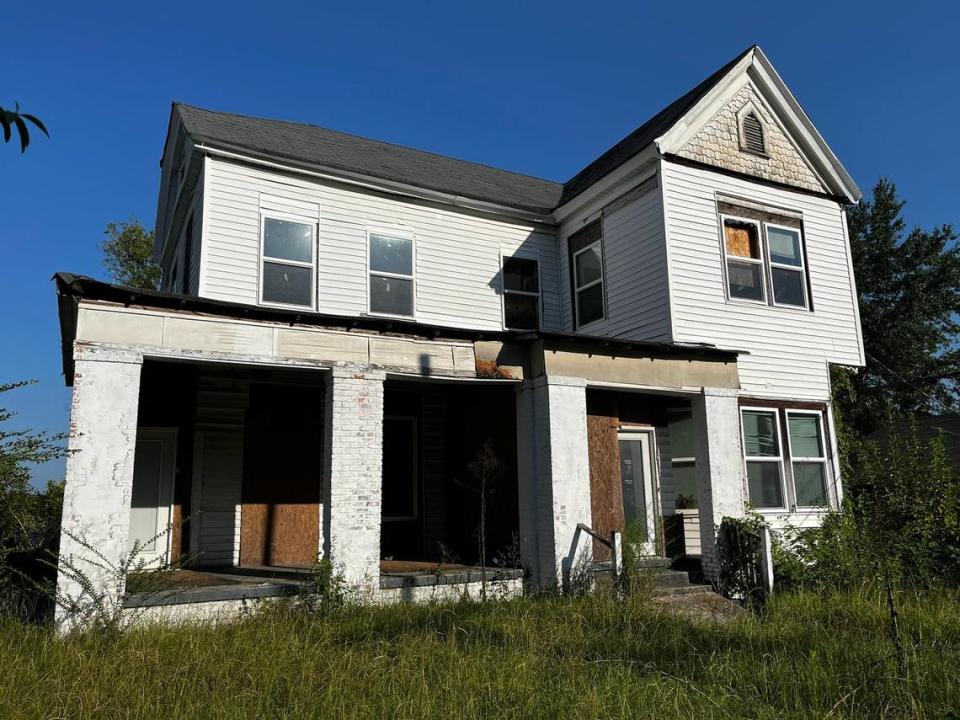
Dr. E.E. Green graduated from Howard University Medical School in 1886, and he and his family moved to Macon afterward. In 1890, four years later, he built a house at what was then 405 Madison St., in the heart of the Pleasant Hill neighborhood. It was home for Green, his wife, Georgia, and their four children — two of whom went on to work in medicine, according to the Historic Macon website.
Later, he also moved a pharmacy that he owned in Macon, Central City Drug Store, into his home.
The house is about 2,700 square feet. After the Greens lived there, it was a single-family home for teachers and others for the next 20 years. It was turned into apartments in 1950, and it has sat vacant since 2000, according to the Historic Macon website.
Tops Housing LLC in Lawrenceville bought the home in 2021 for $37,000. It has since transferred twice and is now owned by Taishan Capital Ventures Inc. As it sits vacant, it continues to deteriorate, so the threat to it is demolition by neglect. Historic Macon is eager to work with the owner to rehabilitate this important house or find a new owner, according to the Historic Macon Website.
FIRST NATIONAL BANK AND TRUST CO.
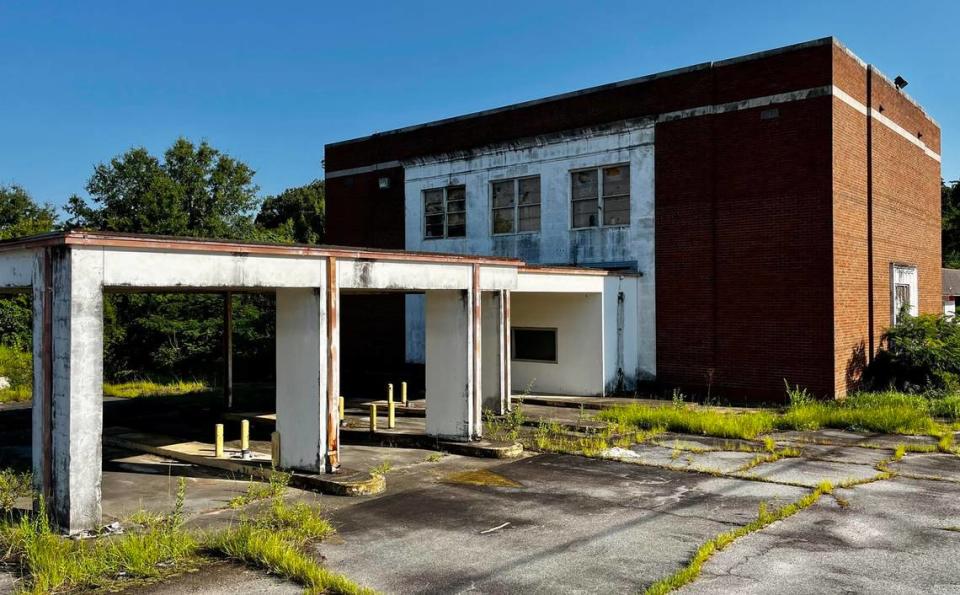
This building, built in 1957 as the southside branch of the First National Bank & Trust Co., closed in 2000. It made the Fading Five list in 2021 — the youngest building ever listed. The property was purchased in February 2019 for $32,000.
It is a mid-century modern building, designed by Macon architect W. Elliott Dunwody Jr. It has traditional and art deco details, such as the door surround and the belt course under the roof, reminiscent of a Greek temple.
As the building sits vacant and blighted, it continues to deteriorate, so the threat is demolition through neglect. It regularly draws complaints as a blighted building, so Historic Macon is eager to work with the out-of-town property owner to find a new buyer — and new use — for the sturdy building, according to the Historic Macon Website.
WILLINGHAM-MCBREARITY HOUSE
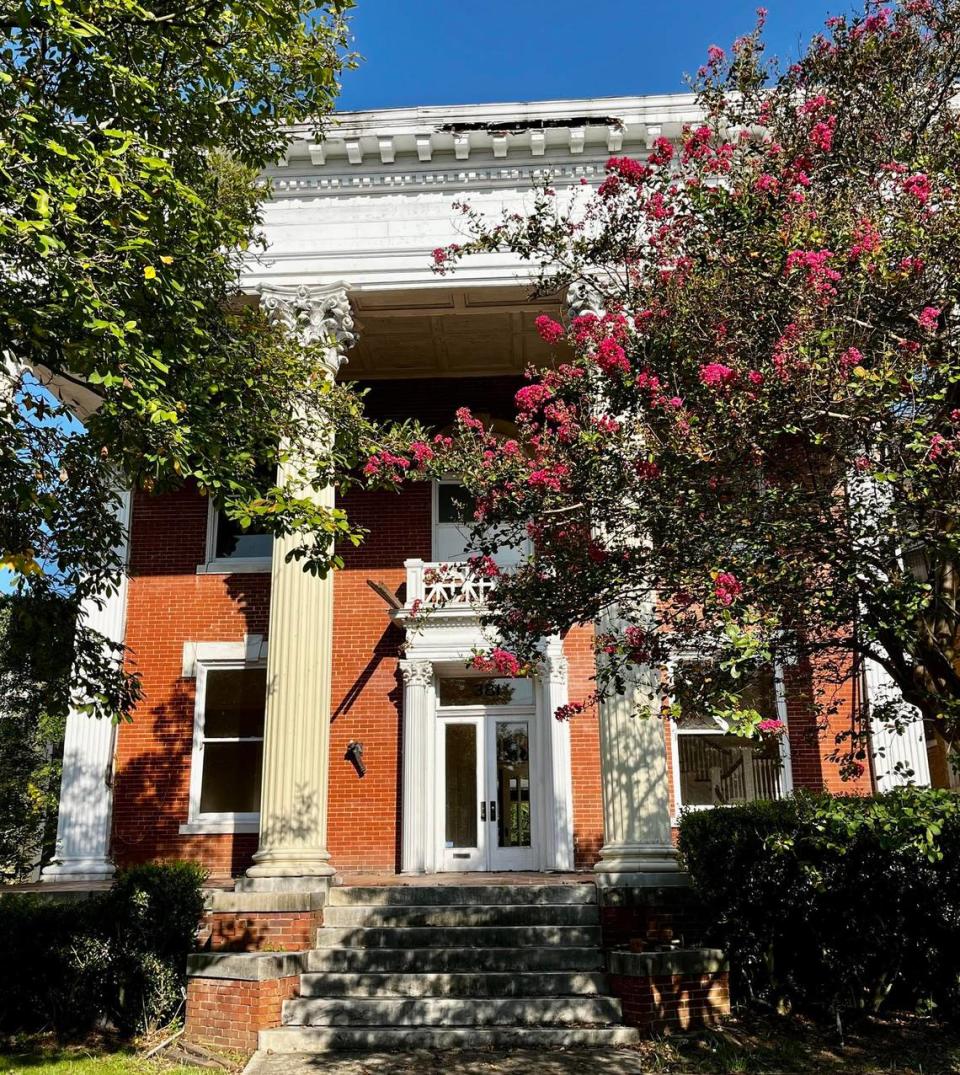
Since listing the house on the 2021 Fading Five list, Historic Macon has had several inquiries about buying the house. The owner, however, has been unresponsive, according to Historic Macon.
Earlier this summer there was activity in the house and the neighborhood was optimistic that the house had been sold. Unfortunately, that enthusiasm was short-lived when the activity there stopped.
Historic Macon would like to see the house occupied and cared for. If it continues to be neglected and unoccupied, it will only continue to degrade and the value will decrease accordingly, according to the Historic Macon Website.
ROXY THEATER
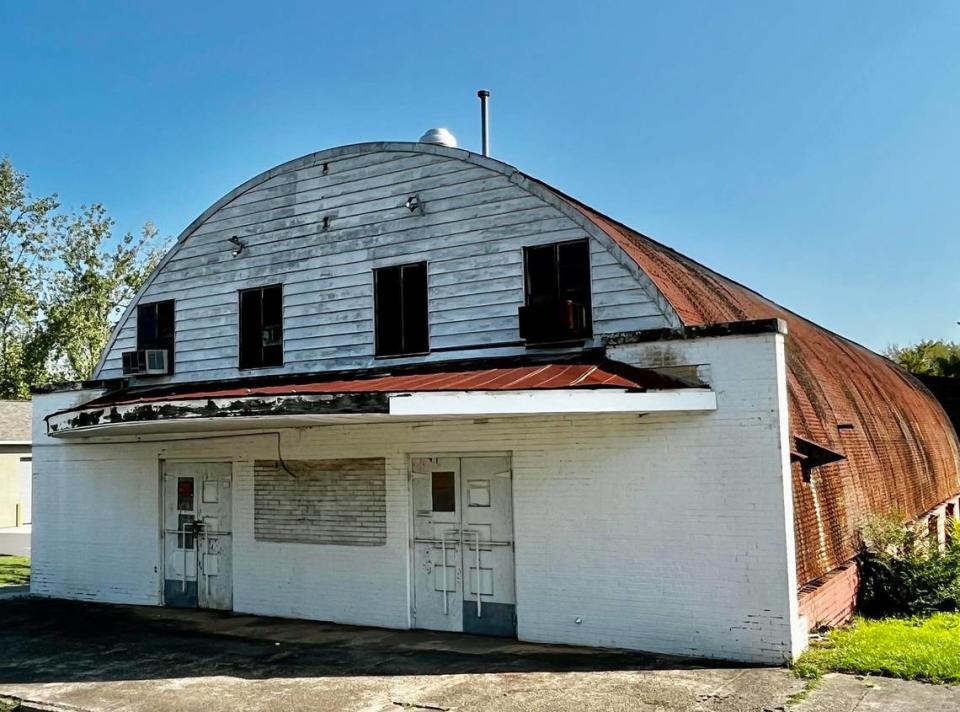
Over the last 18 months, Historic Macon has worked on the first phase of a National Register nomination for the building with the support of a grant from the E.J. Grassman Trust.
Last summer, the building was deemed eligible for the National Register of Historic Places by the Georgia Department of Community Affairs under the areas of entertainment/recreation and ethnic heritage as an example of a venue built specifically for Black entertainment during the era of segregation. The building also appears eligible in the area of architecture as a surviving example of a Quonset hut-type building adapted for use as a theater.
The agency determined that the appropriate period of significance will begin in 1949, the date of construction, and will end in 1958, when the theater closed.
“We hope that nomination will add momentum to renovating the building — and the surrounding Greenwood Bottom area — in conjunction with the investments made nearby at the new Macon-Bibb Economic Opportunity Council and the commercial development along Martin Luther King Jr. Boulevard,” Historic Macon said on its website.
Chalfa said that for him personally, the Train Recreation Center on Oglethorpe Street holds sentimental value .
“It is such an interesting building and unique artifact from the mill village created for workers at the Bibb Manufacturing Company,” he said. “Deed stipulations requiring use by public or charitable purposes, as well as the size and level of interior finish, made it an interesting puzzle to solve, which is why it was on the Fading Five for four years.”
“I’m thrilled that a great program like the UGA Cooperative Extension Office moved into it as their headquarters and that the building can continue to serve the community for years to come,” Chalfa said.
What is Historic Macon?
The organization uses real estate development in conjunction with state and federal tax incentives and philanthropic funding to transform communities.
The brick-and-mortar projects in turn allow Historic Macon to undertake educational and advocacy programming,
“Historic Macon was created by the merger of the Middle Georgia Historical Society and the Macon Heritage Foundation in 2003, and as a result it inherited the missions and activities of both groups,” he said. “The goal of the merger was to create a unified and more effective approach to historic preservation and community development in Middle Georgia.”
Part of that includes the Macon Fading Five project.
The program was initiated as a tool to raise awareness in the community about these types of threats to Macon’s shared history and to the buildings that give downtown so much of its character, with the goal of engaging with the property owners to create solutions that save those buildings.
“Once listed, a property remains on the list until it is no longer under threat,” Chalfa said. “The two most common threats to these historic properties are demolition for redevelopment, like what befell the Douglas House, and demolition through neglect, where a structure is essentially left to collapse through a lack of repair and maintenance.”
The Fading Five is just one component of Historic Macon’s advocacy work. It also hosts an annual Preservation Awards; the awards go to projects and individuals that have embraced preservation.
This year, winners will be announced on May 2.
How can these historic buildings be preserved?
Chalfa said he wished he could report that all five buildings had received necessary repairs to maintain them, but building restoration projects can move slowly, especially when a structure is being adapted for a new use or business concept.
“Historic Macon is in dialogue with the congregation of First Baptist Church about the D.T. Walton Building,” he said. “They are establishing a nonprofit to oversee its repair and reuse; once that organization is up and running we hope to assist them in seeking grants based on its importance to the Civil Rights history of Macon.”
“A descendant of the McBrearity family reached out to Historic Macon about the Willingham-McBrearity House and we attempted to help him contact the current owner to see if he might purchase the home to restore. We haven’t heard any response,” Chalfa said. “Fortunately, the state legislature just renewed a tax credit for owners who restore their historic residences; that incentive could be instrumental in restoring both houses on this list if the right owner is given a chance.
Floore said the city has provided Historic Macon significant funding that drew a match from the national Knight Foundation to build new homes in Beall’s Hill that continue to strengthen that area.
The First National Bank and Trust building and former Roxy Theater are owned by a business and a church respectively, but Chalfa is not aware of any plans to put them back into use for commerce or culture.

